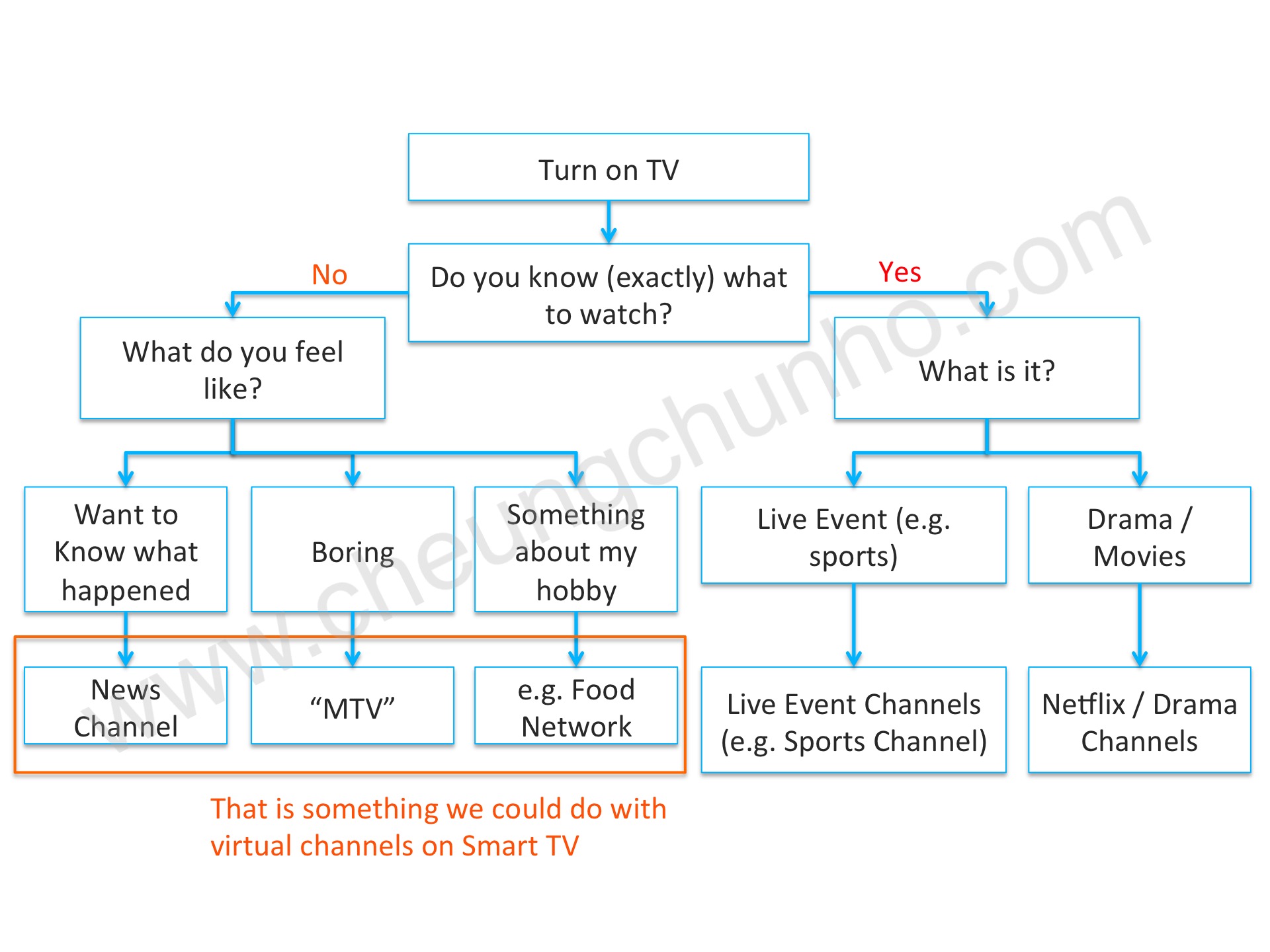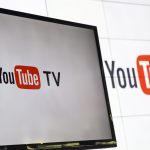In the previous article, we have covered the reasoning of why curated online video could be a new disruptive TV experience.
Now, we are moving on to the feasibility of doing this.
How?
Online Clips joined together and form a Virtual TV Channel
Being the world’s largest taxi company, Uber owns no vehicles. Being the world’s largest accommodation provider, AirBnB owns no real estate. How would it be like for TV industry?
Nowadays, everyone could be a TV content producers. Million of clips are uploaded to Facebook, YouTube and Vimeo everyday. So-called “Key Opinion Leaders” share their view on their specific topics, be it political, hobby, or simply for fun. On mobile environment, user would need to actively scroll down the screen and look for the clips they are interested and watch.
However, on Smart TV, it is required to be presented in another way. Instead of actively discovering the content they want, audience would probably do not have something concrete in their mind about what to watch (otherwise they go straight to Netflix or they would not be turning on the TV). They may have an initial concept in mind. For example, they would want to watch the news (and no one could tell what is the next headline upcoming), they would want to be entertained or they would want to watch something about food, fashion, sports…etc.

In order to cater this typical TV users’ behavior, we couldn’t simply replicate the YouTube app on Smart TVs. A re-think of the user experience is needed. I would suggest an online virtual channel service that could crawl and curate contents found from Facebook and YouTube and arrange them in several playlists in chronological order (I will put it as “Virtual Channel”). The playlists are sorted according to different category (e.g. News, Entertainment Gossip, Sports, Finance..etc) and updated from time to time. Users could tune in the “virtual channels” and get pushed with contents surrounding a specific topic continuously. The user experience is no different from watching a typical video channel, just that the user can now have an option to skip forward and backward for the next video clip.
On top of being fed with the pre-defined virtual channels, smart TV end-users could also attempt to do their own curation. Users could pull in various content sources (e.g. YouTube Channel, Facebook Page) according to their own preferences. Rather than “channels” around specific topics, they could “create” their own TV station dedicated to their kids, grandparent.
Can We do that?
Contrary to IPTV, in the OTT environment, content is the king of the ecosystem. Getting various source of content aligned is the key for the virtual channel service. For a particular country / region, considering the scale and production rate for those amateur Youtuber or online media content is not steady, it is expected to have over 200 online content sources to be lined up to served for a nice virtual channel service comparable to a TV station (i.e. so that users could get new and timely contents all the time like a TV channel)
Signing up deals with over 200 content owners sounds impossible. However, with the support of social media big heads, Facebook and Youtube, it could be achieved easily. Let’s look into their terms and see how we could utilized the contents on those platforms.
YouTube
YouTube has a well defined terms stating clearly the right and responsibility of content owner and the developer using their APIs.
On Section 6 “Your Content and Conduct” of YouTube Terms and condition, point C…
“For clarity, you retain all of your ownership rights in your Content. However, by submitting Content to YouTube, you hereby grant YouTube a worldwide, non-exclusive, royalty-free, sublicenseable and transferable license to use, reproduce, distribute, prepare derivative works of, display, publish, adapt, make available online or electronically transmit, and perform the Content in connection with the Service and YouTube’s (and its successors’ and affiliates’) business, including without limitation for promoting and redistributing part or all of the Service (and derivative works thereof) in any media formats and through any media channels…”
That states clearly that once the content provider uploaded the video, they granted the right for YouTube to distribute on behalf of them. Developers could sign-up for an API key and comply with all the rules stated in the YouTube Developer terms of service to get access to the videos on YouTube. Some highlighted challenges would be the strict requirement of using YouTube official player for video playback and the fulfillment of branding guidelines.
Interestingly in the section “Video organization and discovery” of the “YouTube monetization guideline”…
“While these capabilities are all available in the API, you can introduce other ways for users to discover videos or to organize videos into collections. For example, Dipity’s TimeTube, which analyzes video metadata and presents videos on a timeline, uses an innovative method of displaying information to make it easier for users to find videos. Another way that you could enable users to organize videos would be to build a travel website that lets users create route maps and then upload videos that were filmed at sites along those routes…“
The idea of TimeTube sounds similar to the concept of “Virtual Channel”.
Facebook is not (at least for now) having video content to be their core offering so you could see they have less to restrict on the use of their video contents.
On Section 2 “Sharing Your Content and Information” of “Facebook Statement of Rights and Responsibilities“, point 1…
“For content that is covered by intellectual property rights, like photos and videos (IP content), you specifically give us the following permission, subject to your privacy and application settings: you grant us a non-exclusive, transferable, sub-licensable, royalty-free, worldwide license to use any IP content that you post on or in connection with Facebook (IP License). This IP License ends when you delete your IP content or your account unless your content has been shared with others, and they have not deleted it.”
Similar to YouTube, content owners will grant right to Facebook for distributing the content on internet. Compared to the video-centric service YouTube, Facebook’s policy tends to be broad and they do not have dedicated statements on video content. As long as you do not duplicate or download the video content, according to Facebook Platform Policy, you shouldn’t be in any trouble. However, you should be in particularly careful when you state the content source of origin. Taking a reference to Facebook’s branding guideline would help.
(You could probably verify the feasibility on other platforms like Vimeo, Dailymotion or the Chinese Youku as well. I would leave it to you.)
In the long run…
Serving content from YouTube and Facebook could be a good start but it could probably not possible to induce any decent revenue (you could only do native ads probably). In the long run, I believe, as the virtual channel service grows, the service provider can line up their own video distribution infrastructure and sign up deals directly with the content owners. With the vertical line-up of video distribution service, the content owner and the virtual channel service could have a better control on how they could monetize from the contents (Yes. I would use the terms “monetize’ as there should be much more than just pre-roll advertising). Taking advantages of the interactive context of Smart TV, value added services could also be provided along with the virtual channels.






Comments by Cheung Chun Ho